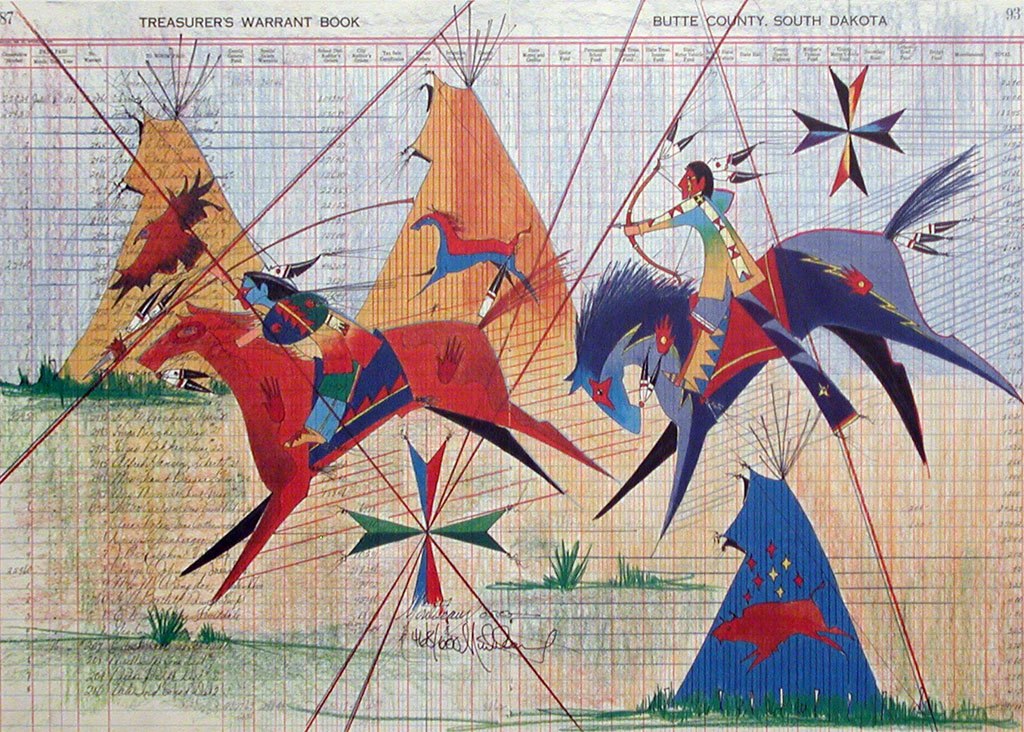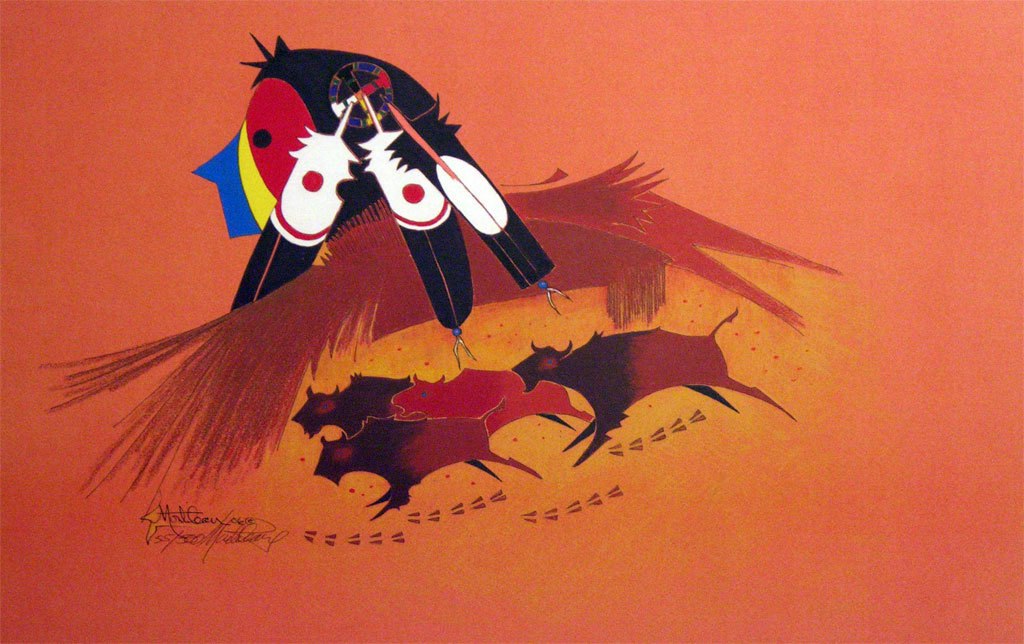Native American Artwork: Ledger Art by Donald Montileaux
As warriors, horses, and buffalo dash across the pages of old ledger books in a brilliant display of color, Native American artist Donald Montileaux honors the lives and histories of his Lakota ancestors with each and every drawing he creates.
With a portfolio of Ledger Art dating back decades coupled with his notoriety as a highly collected, sought after ledger artist - it's no wonder Donald is known as the "reFounding Father" of Ledger Art and is often credited for revitalizing this historic art form.
Origins of Ledger Art: A tribute to his forefathers
Whenever this artist explains the origins of Ledger Art, he is always careful to give full credit to his forefathers and pay tribute to the history they left behind:
"Although Ledger Art was not an art form many people were familiar with until recently (it had a revitalized interest in 1990 and has gained in popularity since), the advent of this Native American art form actually grew out of misery. The Lakota's transition from painting on hides to drawing on ledger paper reflects their drastic change from a nomadic tribe on the open plains to a sedentary lifestyle on the reservation…they lost their hunting grounds, their freedom, and their hides in the move. This forced them to use materials that were available at the time - they bartered with Indian Agents, traders and military officers for their discarded accounting ledger books."
Enhancing history
Donald explains his goal as an artist is to evolve this art form:
"I don't want to reproduce or replicate history, but enhance…"
Fusing ancient symbolism with contemporary design, each of Donald Montileaux's drawings explode with Native American history, spirituality, myths, and legend in radiant color and powerful compositions.
"I want to portray the Lakota people, in an honest way - as people who hunted buffalo, made love, raised children, cooked meals, and lived. Each drawing must have a meaning - whether symbolic or through documentation - it is very important that each tells a story".
Materials: Ledger paper, ink, graphite, and Prisma color
When creating a piece, he says quality materials are essential and emphasizes the importance of good paper: "Paper made of silken fibers has the ability to absorb color and ink slowly - this not only avoids blotches, but also allows for vibrant colors".
He prefers to work with ledger books dated from 1890 to 1940 (its also important to note these books are also relevant to the area once inhabited by the Lakota - SD, ND, WY, NE, and MT). He then creates his drawings using a combination of India ink, graphite, and Prisma Color. The vibrancy of the color comes from an intricate process of building up 5 - 6 layers of color - he activates the final coat by burnishing the color into the paper.
His advice for future generations of Native American artists
Donald also actively seeks out new opportunities to educate young Native Americans and teach them to be proud of their culture. He conducts workshops and teaches classes at Indian Reservations at SD, MT, WY, NE, and ND; his colorful illustrations have also been featured in many children's books.
He says his mission as an educator and illustrator is to encourage and inspire the next generation of Native American artists. His mantra is:
"Be proud of who you are and your history, then determine who you want to be and make your own mark".
Some of the Artist's Creations:


